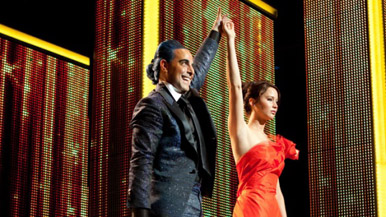|
|
Top 12 Film Industry Stories of 2012: #4The Hunger Games Fills the VoidBy David MumpowerJanuary 8, 2013
Even before the trilogy was finished, a theatrical adaptation of the three movies had long been a foregone conclusion. Lionsgate cleverly acquired the rights for a comically low $200,000 in March of 2009. Despite the rising studio’s well documented financial woes, they spared no expense with regards to the production of The Hunger Games, the first movie in the franchise. A budget of $88 million was announced for the project although Director Gary Ross and super-producer Nina Jacobson somehow made the movie for $10 million under budget, a virtual impossibility in the movie industry these days. Virtually everyone involved could sense that this dystopian film concept was powerful enough to become an overnight sensation. And they were right. Perhaps the origin of this confidence was the casting. Jennifer Lawrence was the awards season darling of early 2011 thanks to her masterful portrayal of Ree Dolly in Winter’s Bone. At the age of 20, Lawrence was nominated for Best Actress, thereby becoming the second youngest person ever lauded in the category. With her indie film reputation secured, Lawrence naturally glided into mainstream cinema as Mystique in X-Men: First Class. That title grossed $350 million worldwide. In a span of only two movies, the young actress became a lavishly praised thespian with a legitimate blockbuster on her resume. Only two weeks after Lawrence enjoyed prime seating at the Oscars, she defeated several other well-known teenagers to become Katniss Everdeen, heroine of The Hunger Games. With Lawrence in the fold, the production staff of The Hunger Games needed to decide quickly regarding two other roles. The Hunger Games trilogy is ostensibly a love triangle of sorts because that is what the Twilight crowd expects from teen literature. Katniss Everdeen is torn between her childhood friend, Gale, and her Hunger Games opponent, Peeta.
[ View other Top 12 Movie Industry Stories of 2012 ]
[ View other BOP Lists ]
[ View columns by David Mumpower ] [ Email this column ]
|

|
|
|

|
Thursday, October 31, 2024
© 2024 Box Office Prophets, a division of One Of Us, Inc.


